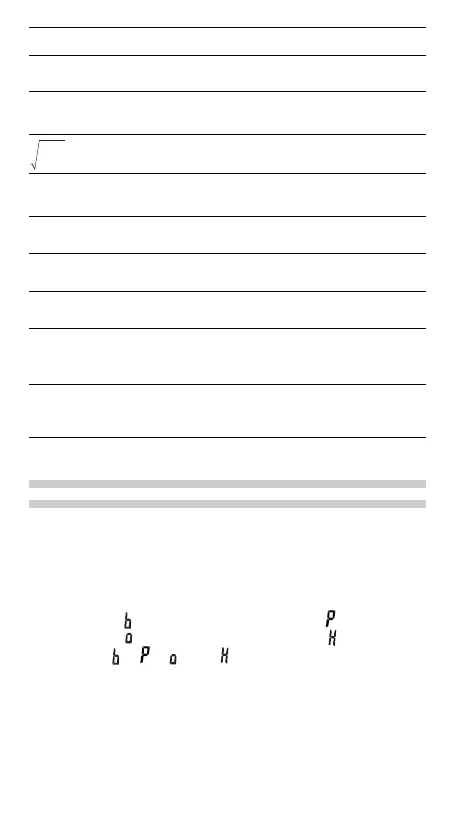– E-15 –
10
—
= @¡ 2 \ 3 =
4.641588834
(
—
)
5
=7 \ 5 ™ 5 =
16807
°
3125
(
—
)
—
=
1 \ 8 ™ 1 \ 3
=
1
°
2
—— = @⁄ 64 \ 225 =
8
°
15
2
3
( 2 ™ 3 ) \
3
4
( 3 ™ 4 ) =
8
°
81
1.2
1.2 \ 2.3 =
12
°
23
2.3
1°2’3”
1 o 2 o 3 \ 2 =
0°31’1.5”
2
1×10
3
1 E 3 \ 2 E 3 =
1
°
2
2×10
3
A = 7 ª 7 OA
7.
— = 4 \KA=
4
°
7
1.25 + — = [a.xxx] 1.25 + 2 \ 5 =
1.65
→[a—] \
1
°
13
°
20
*
4
°
5
°
6
= 4—
Binary, Pental, Octal, Decimal, and Hexadecimal
Operations (N-Base)
Conversions can be performed between N-base numbers. The
four basic arithmetic operations, calculations with parentheses
and memory calculations can also be performed, along with the
logical operations AND, OR, NOT, NEG, XOR and XNOR on
binary, pental, octal and hexadecimal numbers.
Conversion to each system is performed by the following keys:
@ê (“
” appears.), @û (“ ” appears.),
@î (“
” appears.), @ì (“ ” appears.),
@í (“
”, “ ”, “ ” and “ ” disappear.)
Note: The hexadecimal numbers A – F are entered by pressing
ß, ™, L, ÷, l, and I, and dis-
played as follows:
A → ï, B → ∫, C → ó, D → ò, E → ô, F → ö
In the binary, pental, octal, and hexadecimal systems, fractional
parts cannot be entered. When a decimal number having a
2
3
64
225
— =
—– =
——– =
——– =
4
A
2
5
b
c
5
6
7
5
1
8
1
3
EL5060E_En0616.pm65 06/16/2004, 13:1015
